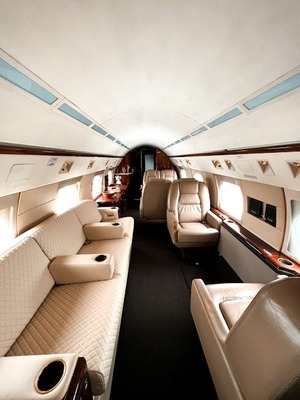
Private jet charters are often seen as the pinnacle of luxury travel, offering unparalleled comfort, privacy, and convenience. However, beyond the glamor, safety standards play a crucial role in differentiating private jet charters from commercial flights. When choosing private air travel, passengers must understand how safety regulations and practices in this industry are implemented. Let’s dive deep into the comprehensive safety protocols that set private jet charters apart.
Stringent Pilot Training and Experience
One of the primary aspects where private jet charters differ from commercial airlines is the pilot training and qualifications required. While commercial airlines hire pilots who meet the Federal Aviation Administration (FAA) minimum standards, private jet operators often go above and beyond these basic requirements.
Most private jet charter companies only employ pilots with significant flight hours, far exceeding the mandated requirements. In many cases, pilots must have type ratings specific to the aircraft they operate, ensuring familiarity with the unique controls and handling characteristics of that particular jet.
Additionally, these pilots undergo regular recurrency training to keep their skills sharp and are often required to attend annual or bi-annual safety training programs. This ensures they are up to date on the latest safety protocols and emergency response procedures.
Rigorous Aircraft Maintenance Standards
Another critical factor that sets private jet charters apart is their rigorous approach to aircraft maintenance. While commercial airlines are also held to strict maintenance requirements, private jet operators often implement even higher standards.
Private jets are typically subject to more frequent maintenance checks. These include daily pre-flight inspections, post-flight inspections, and thorough checks at regular intervals, often more frequent than those mandated by the FAA. Many private jet operators also participate in third-party audits, such as those provided by ARGUS or Wyvern, to ensure they are consistently meeting the highest industry standards.
These third-party auditors evaluate an operator’s maintenance records, pilot training protocols, and safety procedures to provide ratings and certifications that passengers can trust. A private jet operator with a platinum rating from one of these organizations is widely considered to be among the safest in the industry.
Personalized Pre-Flight Safety Briefings
When flying on a commercial airline, passengers receive a standardized safety briefing before takeoff. These briefings are typically generic and meant to cover a broad audience. However, on a private jet charter, passengers often receive personalized safety briefings tailored to the specific aircraft they are flying on.
These briefings may include details on how to operate emergency exits, the location of life-saving equipment, and specific procedures for emergencies such as decompression events or water landings. This personalized approach ensures that passengers are fully informed and prepared in case of any unforeseen circumstances during the flight.
Smaller, More Exclusive Aircraft Fleets
Private jet charters generally operate smaller, more exclusive fleets compared to commercial airlines. These jets are often newer and incorporate the latest technology in navigation, safety systems, and aircraft performance. Modern private jets come equipped with advanced avionics systems like synthetic vision and enhanced weather radar, which enhance the pilot’s situational awareness and ability to avoid hazardous weather conditions.
Because private jets are frequently maintained and updated with the latest technology, passengers can have confidence that they are flying in state-of-the-art aircraft that meet or exceed current safety regulations.
Private Charter Flexibility and Safety Control
Another significant difference between private jet charters and commercial flights is the flexibility and control over flight operations. On commercial airlines, passengers have little say over flight schedules, routes, or safety protocols. Private charters, however, offer far more flexibility and control, which can enhance safety.
For example, private jets can often fly at higher altitudes, above commercial traffic and turbulence, offering a smoother and safer flight experience. Additionally, private jet charters are not bound by the same fixed flight schedules as commercial airlines, which allows pilots and operators to make decisions based solely on weather conditions and other safety concerns rather than rigid timetables.
Higher Crew-to-Passenger Ratios
In the private aviation industry, there is often a higher crew-to-passenger ratio compared to commercial airlines. This translates into more personalized attention and a higher level of care during the flight. Crew members are trained to address individual needs, including any specific safety concerns passengers may have.
For example, private jet crews are trained in first aid and emergency procedures, allowing them to respond quickly in case of an incident. The smaller number of passengers on board ensures that crew members can dedicate more time to safety practices and passenger comfort throughout the journey.
Compliance with FAA and EASA Standards
Both commercial airlines and private jet charters must comply with FAA and EASA (European Union Aviation Safety Agency) safety regulations. However, many private jet charter operators go beyond these regulatory requirements.
In addition to meeting all FAA or EASA standards, many operators also adhere to IS-BAO (International Standard for Business Aircraft Operations), a voluntary global standard that promotes the highest levels of safety and professionalism in the business aviation industry.
Obtaining IS-BAO certification requires a detailed audit of the company’s safety policies, flight operations, maintenance procedures, and risk management strategies. Only operators who consistently demonstrate a commitment to safety can maintain this prestigious certification.
Enhanced Security Protocols
Security is another area where private jet charters have an edge over commercial airlines. While commercial flights must go through standard TSA screening processes, private jet passengers experience far less invasive security checks. However, this does not mean that safety and security are compromised.
Many private jet operators offer enhanced security measures such as background checks on all passengers, thorough vetting of flight crew, and access to private terminals (also known as FBOs). These FBOs provide a secure and exclusive environment for passengers to board their aircraft without the risks and delays associated with commercial airport terminals.
Conclusion
When comparing the safety standards of private jet charters and commercial flights, it becomes clear that private aviation prioritizes a more individualized, rigorous approach to ensuring passenger safety. From pilot training and aircraft maintenance to personalized briefings and enhanced security, private jet charters operate with an elevated level of attention to detail that ensures the highest standards of safety and professionalism.
For passengers seeking not only luxury but also peace of mind, private jet charters deliver a uniquely secure and reliable travel experience. Book a private jet with Worldwide Jet, and call 602-726-9990!
















.png)
.png)








Leave Your Comment & Rating Below
0 Comment(s)